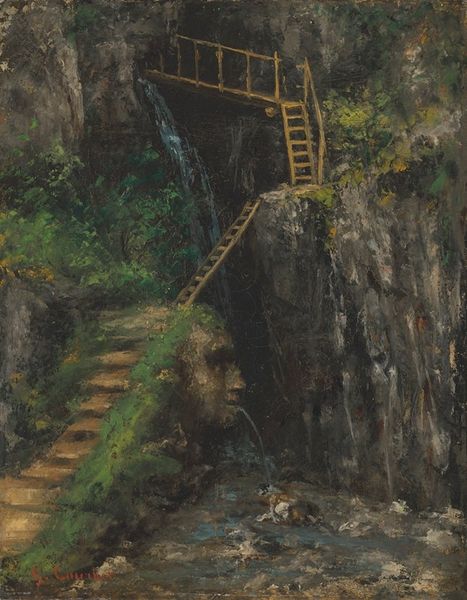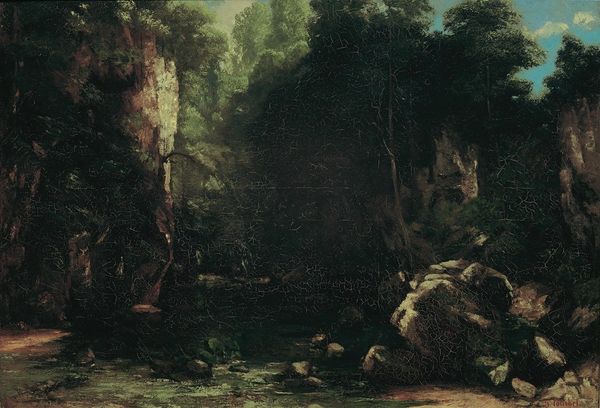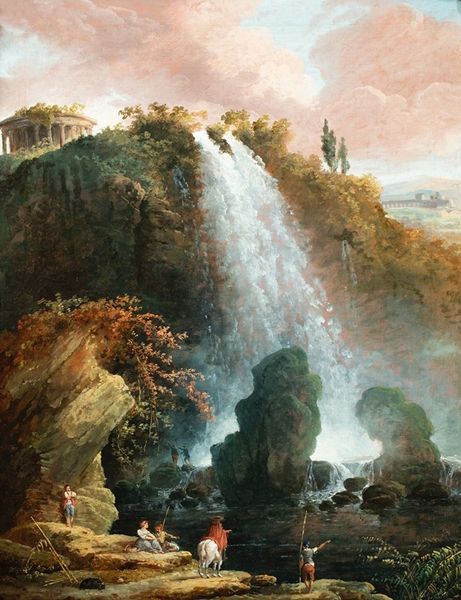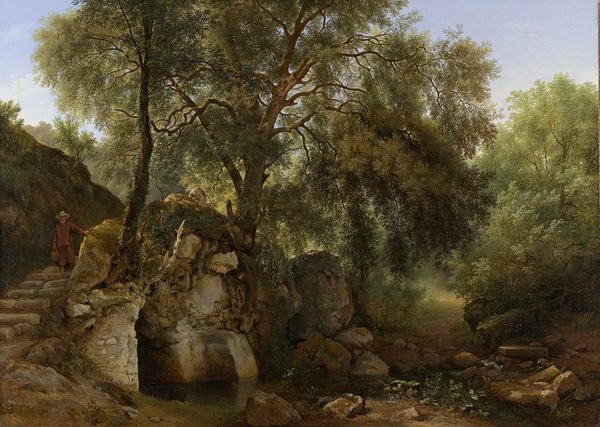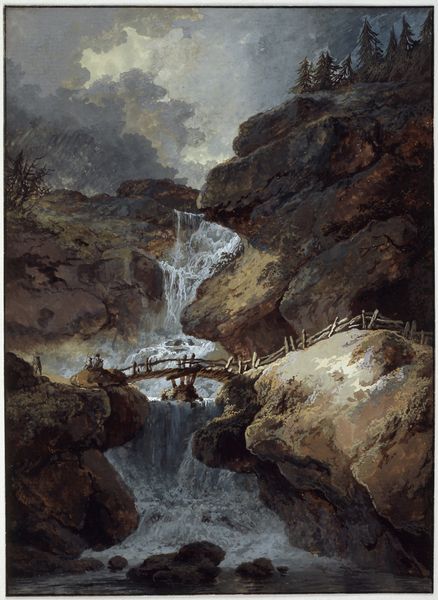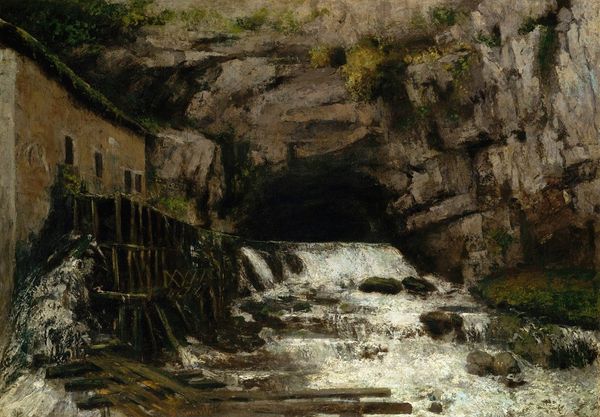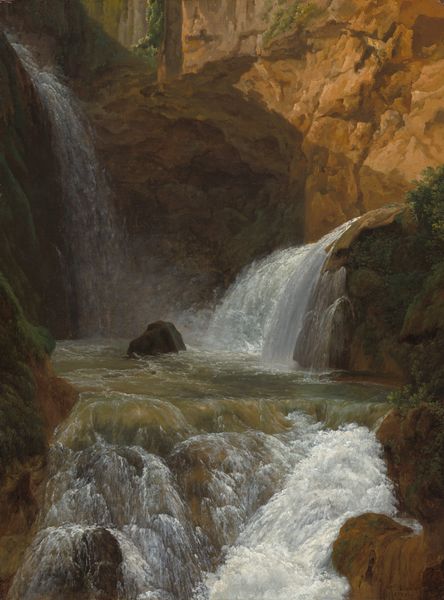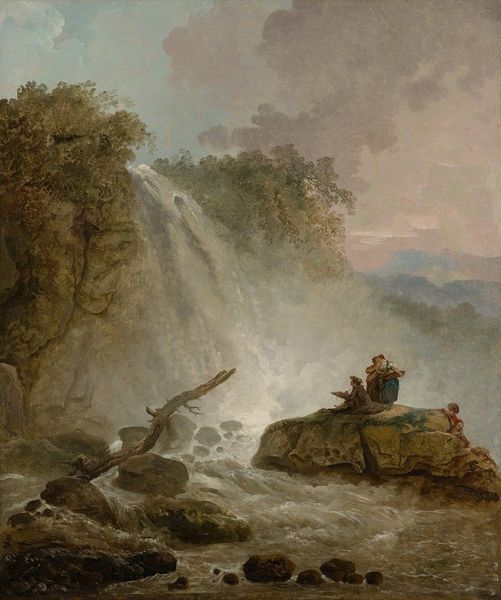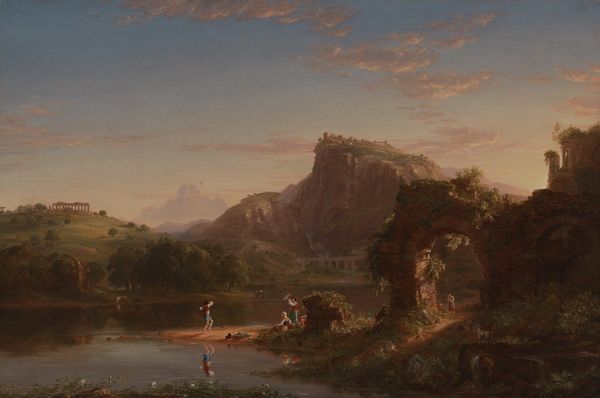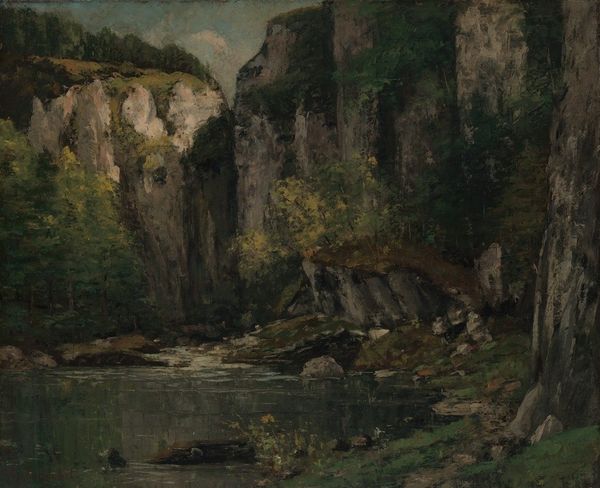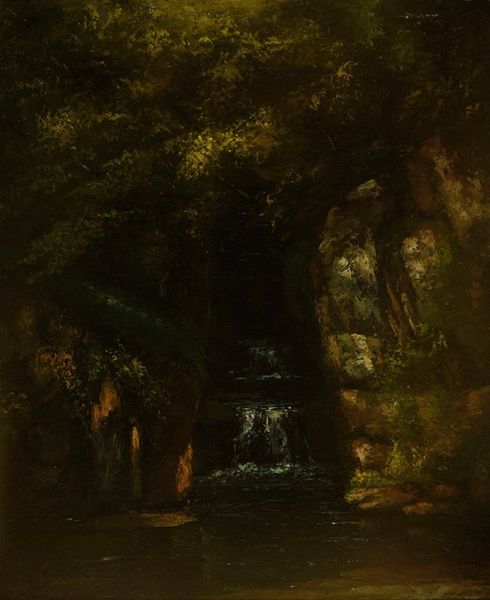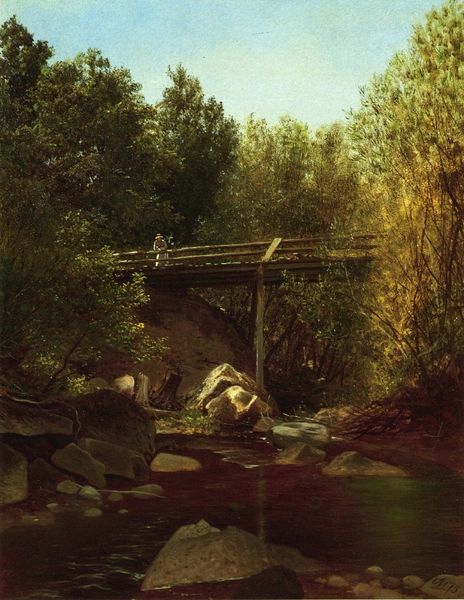
Copyright: Public Domain: Artvee
Curator: At first glance, this painting seems a bit somber, wouldn't you agree? The dark greens and browns lend a certain weight to the image. Editor: Indeed. This is Gustave Courbet's "The Great Bridge," an oil painting completed in 1864. We see an old stone bridge spanning a rocky riverbed. It is interesting that although he is associated with realism, there is much romanticism in this piece. Curator: Yes, there is a compelling dialogue here between the romantic sublime of the natural landscape and the more mundane detail of everyday life; someone is crossing the bridge on horseback, but at this scale it becomes secondary to the raw power of the falls. How does that relationship strike you? Editor: Well, for starters, the inclusion of a human figure draws attention to the theme of humanity's relationship with nature, how we mediate our experience of nature, perhaps? Consider the socio-political climate of the time. France was undergoing significant industrialization, changing perceptions of the rural world; in response we have an increased investment in the representation of nature in art. Curator: The rushing water almost seems to defy the stillness we associate with painting, especially on a canvas of this scale; do we know why Courbet selected this view, with this arrangement of stone and rushing water? I would hazard to say he invites the viewer into the psychological state of turbulence and the sublime. Editor: What stands out to me is that the painting omits any grand narrative or specific historical event. Courbet seems intent on presenting the landscape as is, resisting traditional history painting in favor of portraying everyday reality, while playing with those notions of the sublime you mentioned. His commitment to "realism" was radical. How would you interpret this choice, given his era and the prevailing academic norms? Curator: Well, the "truth to nature" philosophy becomes very potent at a time when there is anxiety over new industrial powers and social structures taking shape; I would say that it represents an appeal to the symbolic power of landscape to restore a sense of groundedness and continuity, what Carl Jung might call integration of the self. Editor: An interesting point! He very consciously pushes back against the grain to highlight everyday life. It really causes you to rethink who or what defines what is important, historically, even politically. Curator: This interplay is definitely present. I feel there is still more to unearth regarding the deep psychological aspects embedded here, about what the image signifies for cultural memory and self-understanding.
Comments
No comments
Be the first to comment and join the conversation on the ultimate creative platform.
